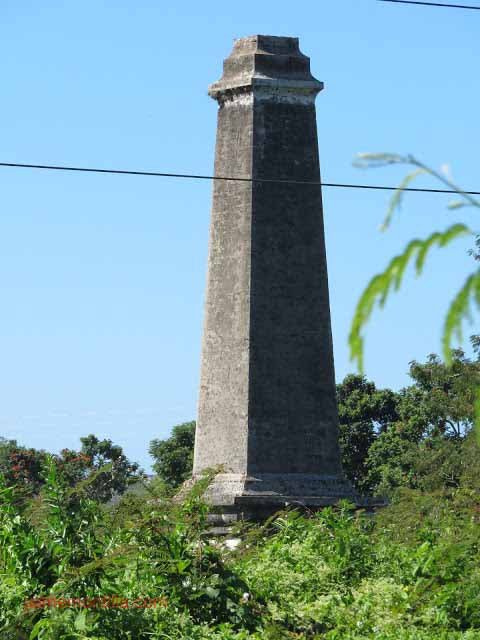
Central Las Claras
Location: Arecibo
Date Established: 1877
Date Ceased Operations: 1905
Annual Production Graph: N/A
Average Annual Production: N/A
Best Production Year: N/A
Family Ownership: Fernandez Umpierrre, Fernandez Muñoz
Corporate Ownership: N/A
José Ferreras Pagán in his 1902 book Biografia de las Riquezas e Puerto Rico states that the "Factoria Central Las Claras" was acquired ca. 1877 by the "Marquesa de Las Claras" from Francisco Serrat. The previous owner of Hacienda Las Claras was not Francisco Serrat but Francisco Stewart, a Scottish immigrant who according to Astrid Cubano Iguana in her essay La Economía Arecibeña del Siglo XIX Identification de Productores y Comerciantes, in 1841 figured as owner of Hacienda Las Claras. She states that by 1860 the hacienda was managed by Hugo Shiver because Stewart was then living in London where he died in 1874. Ferreras Pagán also states that in 1902 its manager was Bernardo Wiss, which correct name should most likely be Bernardo Huicy Marín. While in 1902 the property was indeed owned by inheritance by the "II Marquise of Las Claras", some of the information on Ferreras Pagán‘s book seems to be in error. The publication Las Haciendas de Arecibo: Expediente de Visitas a las Haciendas de 1841, which documents a visit by government personnel to the different haciendas in Arecibo during 1841, states that Hacienda Las Claras was then owned by Francisco Stuard, sometimes spelled Estuard, not Francisco Serrat. Ferreras Pagán states that Hacienda Las Claras was owned by the II Marquise of Las Claras since 1877, which is an error due to the fact she was only thirteen years old in 1877.
Spanish immigrant Fernando Fernandez, owner of Hacienda Santa Ana had two sons, Manuel Fernandez Martinez (1807-1883) who inherited Hacienda Santa Ana from his father and José Ramón Fernandez Martinez “Marqués de la Esperanza” (1808-1893), owner of Hacienda La Esperanza and part owner of Central Canóvanas. Manuel had a son named Fernando Fernandez Umpierre (1839-1896) born in San Juan. Fernando acquired Hacienda Las Claras ca. 1877 from Francisco Stuard which ownership is verified by and edict published in the August 21, 1886 edition of La Gaceta de PuertoRico notifying a permission granted Fernando Fernandez Umpierre to take two hundred liters of water per second from the Rio Grande de Arecibo for irrigation purposes at his two hundred hectare Hacienda Las Claras. His ownership in 1887 is also verified by the fact that on April 22, 1887 Fernando was granted the nobility title "Marqués de las Claras" by Queen Regent María Cristina de Habsburgo-Lorena. The name "Marqués de las Claras" refers to the name of the plantation he owned at the time as was the case with other noble titles like that of his uncle.
During his lifetime, Fernando Fernandez Umpierre became an important sugar plantation owner and influential person in Arecibo. In 1888 he built a house known as Palacio del Marqués de Las Claras. This property, later the Casino de Arecibo, was listed in the National Register of Historic Places in 1988. He was also influential in the construction in 1876 of the Teatro Las Claras, the town theatre later known as Teatro Oliver when owned by Andres Oliver Roses, also included in the National Register of Historic Places in 1996.
Bt 1902 during Fernandez Umpierre's ownership of Hacienda Las Claras, it was upgraded to a central sugar mill. Upon his death in 1896, the sugar mill and the nobility title was inherited by his Arecibo born daughter Maria Manuela Fernández Muñoz II Marquise of Las Claras (1864-1902). Maria Manuela married Manuel Elzaburu Vizcarrondo (1841-1892). In 1898 then a widow, she married her brother-in-law Francisco Elzaburru Vizcarrondo in Madrid where she died just five years later at the age of thirty seven. In 1905, Central Las Claras then consisting of eight hundred four cuerdas, was acquired for a reported $175,000 by Central Cambalache from the Estate of Maria Manuela Fernández Muñoz "II Marquise of Las Claras".
According to Ferreras Pagán, Central Las Claras was located near the Rio Grande de Arecibo on the old road to San Juan, south of the railroad tracks and near the Cambalache train station. Its location can be clearly identified the Trapiches map in the Map Section. The chimney photographed below is some 300m from the general area where Central Las Claras was located. It is not verified it as belonging to any sugar factory so it is reasonable to believe it belonged to Hacienda Las Claras, the precursor to Central Las Claras.

